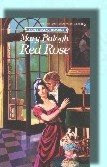A British Treasure

In the spring of 1986 I absorbed a museum exhibit that ranks as the best in my experience. "The Treasure Houses of Britain" was seen by almost one million people during its five months at Washington's National Gallery of Art. Like most of the visitors I was amazed, impressed, "gobsmacked" not only by the sheer opulence of the treasures but also by their artistic merit. Whenever I haul out the 600page/7 pound catalog I lose myself for hours and today alone I came up with tree subjects for future blog posts. Here are a few notes about the Treasure Houses exhibit. According to the National Gallery of Art website more than 700 objects were gathered from more than 200 homes in Great Britain representing collecting and domestic arts from the 15th to the 20th century. Gervase Jackson-Stops chose the art work and the exhibit was structured to showcase each period of collecting. Seventeen period rooms were built to display the objects. "The Treasure Houses of Brit...






